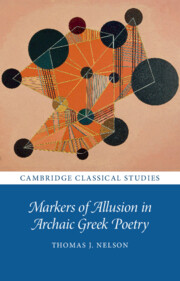Book contents
- Markers of Allusion in Archaic Greek Poetry
- Cambridge Classical Studies
- Markers of Allusion in Archaic Greek Poetry
- Copyright page
- Dedication
- Contents
- Acknowledgements
- Conventions and Abbreviations
- Chapter I Introduction
- Chapter II The Pre-Alexandrian Footnote
- Chapter III Poetic Memory
- Chapter IV Time For Allusion
- Chapter V Epilogue
- Bibliography
- Index Locorum
- Index of Indices
- General Index
- References
Bibliography
Published online by Cambridge University Press: 11 May 2023
- Markers of Allusion in Archaic Greek Poetry
- Cambridge Classical Studies
- Markers of Allusion in Archaic Greek Poetry
- Copyright page
- Dedication
- Contents
- Acknowledgements
- Conventions and Abbreviations
- Chapter I Introduction
- Chapter II The Pre-Alexandrian Footnote
- Chapter III Poetic Memory
- Chapter IV Time For Allusion
- Chapter V Epilogue
- Bibliography
- Index Locorum
- Index of Indices
- General Index
- References
Summary
- Type
- Chapter
- Information
- Markers of Allusion in Archaic Greek Poetry , pp. 332 - 416Publisher: Cambridge University PressPrint publication year: 2023
- Creative Commons
- This content is Open Access and distributed under the terms of the Creative Commons Attribution licence CC-BY-NC-ND 4.0 https://creativecommons.org/cclicenses/



